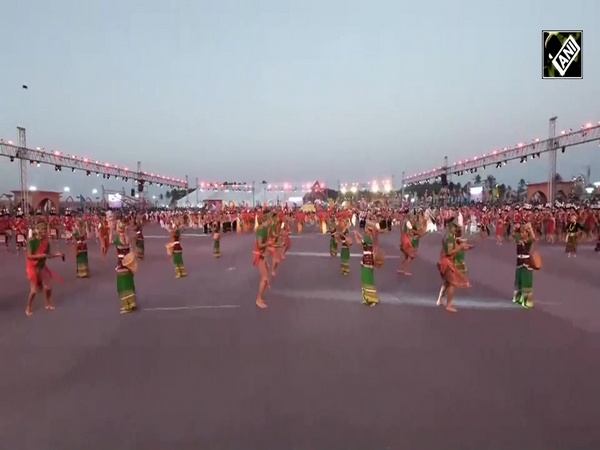West Bengal: Violation of NGT orders in Siliguri ahead of Chhath Puja
Oct 30, 2022

Siliguri (West Bengal) [India], October 30 : Ahead of Chhath Puja, Siliguri witnessed a massive violation of National Green Tribunal (NGT) directions as there are many people making illegal Chhath ghats on various river beds across the city.
It has been found that excavators are creating artificial ghats in the middle rivers. It has also been found that the excavators are lifting the soil, creating makeshift bamboo structures for the puja scheduled to be held on October 30 and 31.
Although, the civil administration and police administration made necessary safety arrangements on river ghats to avoid any unwanted incidents during the Chhath Puja.
The developments have now become a matter of concern for the city administration, especially after the tragic deaths of eight people in a flash flood during Durga Puja immersion in Mal river. 
Siliguri Municipal Corporation (SMC) and administration held preparatory meetings with the Chhath Puja committees.
Siliguri Municipal Corporation Mayor Goutam Deb said, "We had a meeting with the Chhath Puja committees where we informed all about the restrictions. Few are still not following the guidelines. Police will take the issue as early as possible."
Manoj Verma, a devotee told ANI, "A few devotees have confusion over the NGT guidelines. So they are in the middle of the river. Except for them, all are following the guidelines given by the administrations. Moreover, we all got a lesson from the Mal incident recently."
Meanwhile, Mahananda Bacchao committee general secretary Joshna Agarwal said the administration has failed to implement the NGT orders. "The devotees are randomly making ghats in the river beds in various ghats in Siliguri. Police should take strong action," she added.
Chhath Puja is an ancient Hindu Vedic festival that is performed to seek blessings from the Sun God for a healthy, happy, and prosperous life. It is believed that sunlight has cures for various diseases and conditions. Taking a dip in the holy river is also considered to have certain medicinal and spiritual benefits. The festival requires maintaining the utmost ritualistic purity.
Also referred to as Surya Shashti, Chhath, Mahaparv, Chhath Parv, Dala Puja, Pratihar and Dala Chhath, the four-day-long festival is dedicated to the deity Surya and Shashthi Devi.
As part of the ritual, women fast for the well-being of their sons and the happiness of their families. They also offer Arghya to Lord Surya and Chhathi Maiya.
The four-day festival started on October 28, which was a Friday, with the main day and the last day of the puja, being celebrated on October 31, which is falling on Monday.
On each day, people observe the Chhath and follow rigorous rituals. As per Drik Panchang, sunrise on Chhath Puja will be at 06:43 am, and sunset will happen at 06:03 pm. The Shashthi tithi begins at 05:49 am on October 30 and ends at 03:27 am on October 31.
Chhath is Chhath Puja is celebrated by people by following different rituals. The first day of Chhath Puja is known as Kaddu Bhaat or Nahai Khai. On this day the parvaitin (the main worshiper who observes fast) cooks the Satvik Kaddu Bhaat along with pulse and serves it as a bhog to the deity in the afternoon.
The second day of Chhath Puja is known as Kharana. On this day, the parvaitin cooks roti and rice kheer and serves it as a bhog to the 'Chandradevta' (Moon God).
A full-day fast without water is observed on the third main day of Chhath Puja. The main ritual of the day is to offer Arghya to the setting Sun. On the fourth and final day of Chhath, Dusri Arghya is given to the rising Sun and it is known as Usha Arghya. The 36 hours long fast is broken after giving Arghya to the Sun.

















